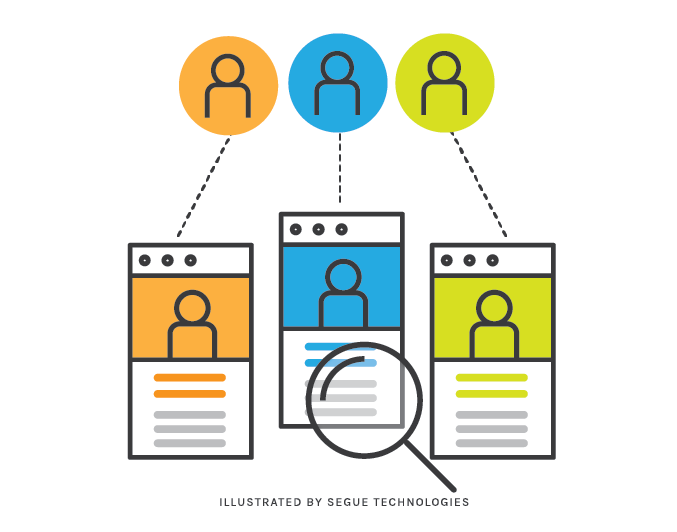A desktop view has more freedom for layout because designers have a lot more space to work with. But as the viewport shrinks, so do the options for content placement. Before we could plan the design for Segue’s responsive website, we had to determine exactly what information our users needed first, particularly when they accessed the site on mobile devices. Of course, you should always follow best practices for placement of logos, menus, and so forth. However, the real “meat” of the website, and the relative information our users were looking for still had to be defined and prioritized so they could find it just as easily. By prioritizing this information and making that content easy to find, we could keep our website visitors happy and increase the likelihood of them remaining on the site for longer periods of time, hopefully moving them one step closer towards becoming a customer. This is when task analysis comes in handy!

What is Task Analysis?
A task analysis is a usability exercise that helps identify users tasks and goals on a website. Doing a task analysis will help designers make informed layout decisions as they wireframe the site. In our case, we already had a website but needed to work on the responsive solution, so, a task analysis was justified because technically we were designing a new site …… a responsive one!
When conducting a task analysis, you’ll learn more about:
- What users are doing on your site
- Looking for an order form?
- Sending an email?
- Looking for information on a contract vehicle?
- The effect their environment has on your users
- Are they on the road?
- Do they work from home?
- Do they sit in a cubicle with other people close by?
Creating Personas
Before we could perform a task analysis, we had to identify the types of users that would actually be completing the tasks. This is when personas are reintroduced to the project. Personas are written representations of your users. Since our website was built years ago we opted to use actual clients. We pulled client information by reviewing contact forms and marketing wins accomplished through the website. It’s good to have anywhere fro six to eight personas, depending on the project. We had six different personas for our exercise and each persona had a story about who they were, and what they were trying to accomplish on our website. Each story was very specific to that persona because, just like in real life, no two people are exactly alike. So now that we had our personas, we were ready to compare the frequency of specific tasks on our website.
To get started, every team member was assigned a persona. We had a spreadsheet with all the possible tasks listed down the side, as well as room for new tasks we didn’t consider. The names of each of the personas were along the top of the spreadsheet. Each team member read aloud what their particular persona was doing on the website. Every time they completed a specific task, we checked it off on the spreadsheet. We did this for every single persona.
By the end of the exercise we had a document that outlined critical tasks for our users. This information was exactly what the designers needed before they could make suggestions for content layout on smaller viewports. The more frequent the tasks, the more visible the content. It’s really that easy!
You can also use this opportunity to update a few things on the desktop version of your website as you “walk” in your users’ shoes. We made some changes to our existing website as well. These changes were particularly made to the careers section and how specific job openings are accessed. We also updated the location of some information on our homepage to accommodate our Government clients. Remember, this is your opportunity to improve the site so go for it! As a matter of fact, you should do a persona run through on your website every so often to make sure you’re still providing good content in a useful format. This is exactly what you are doing with the task analysis and persona exercise, and you will now have the documentation to justify your suggestions to any decision makers in your company.


